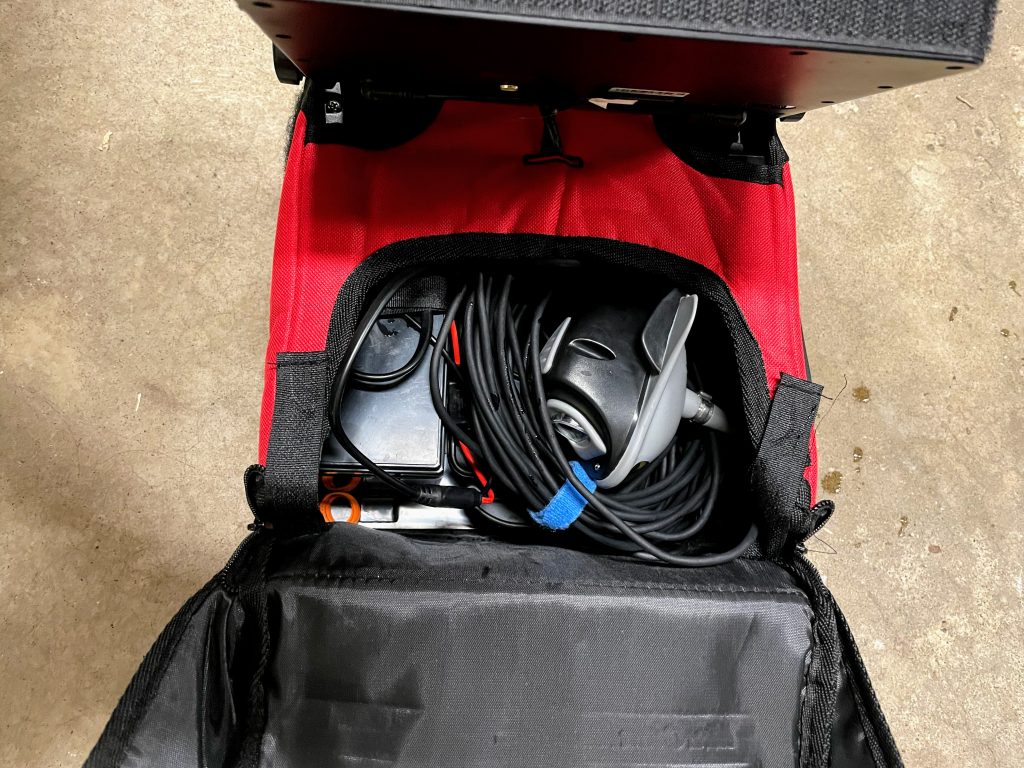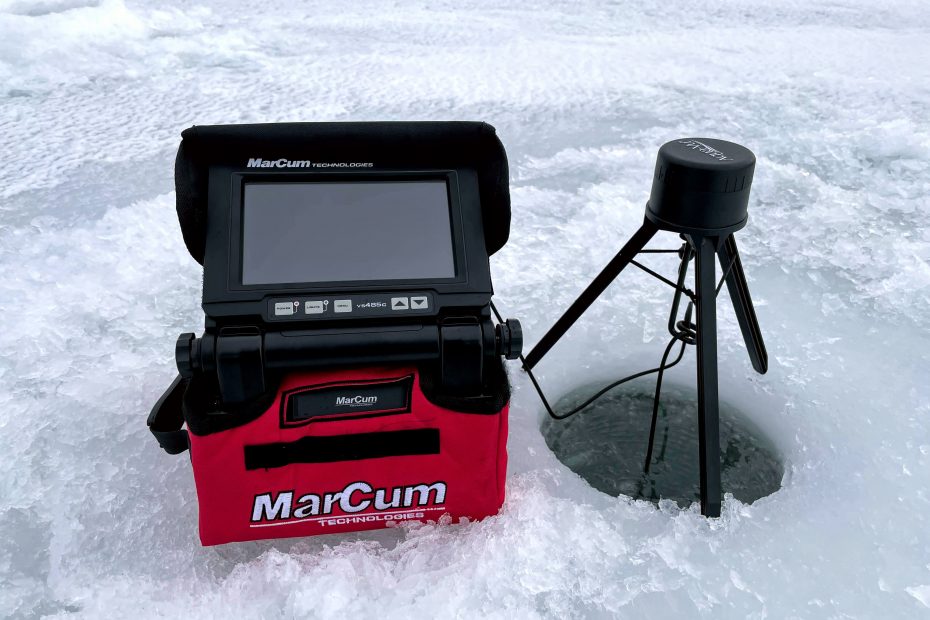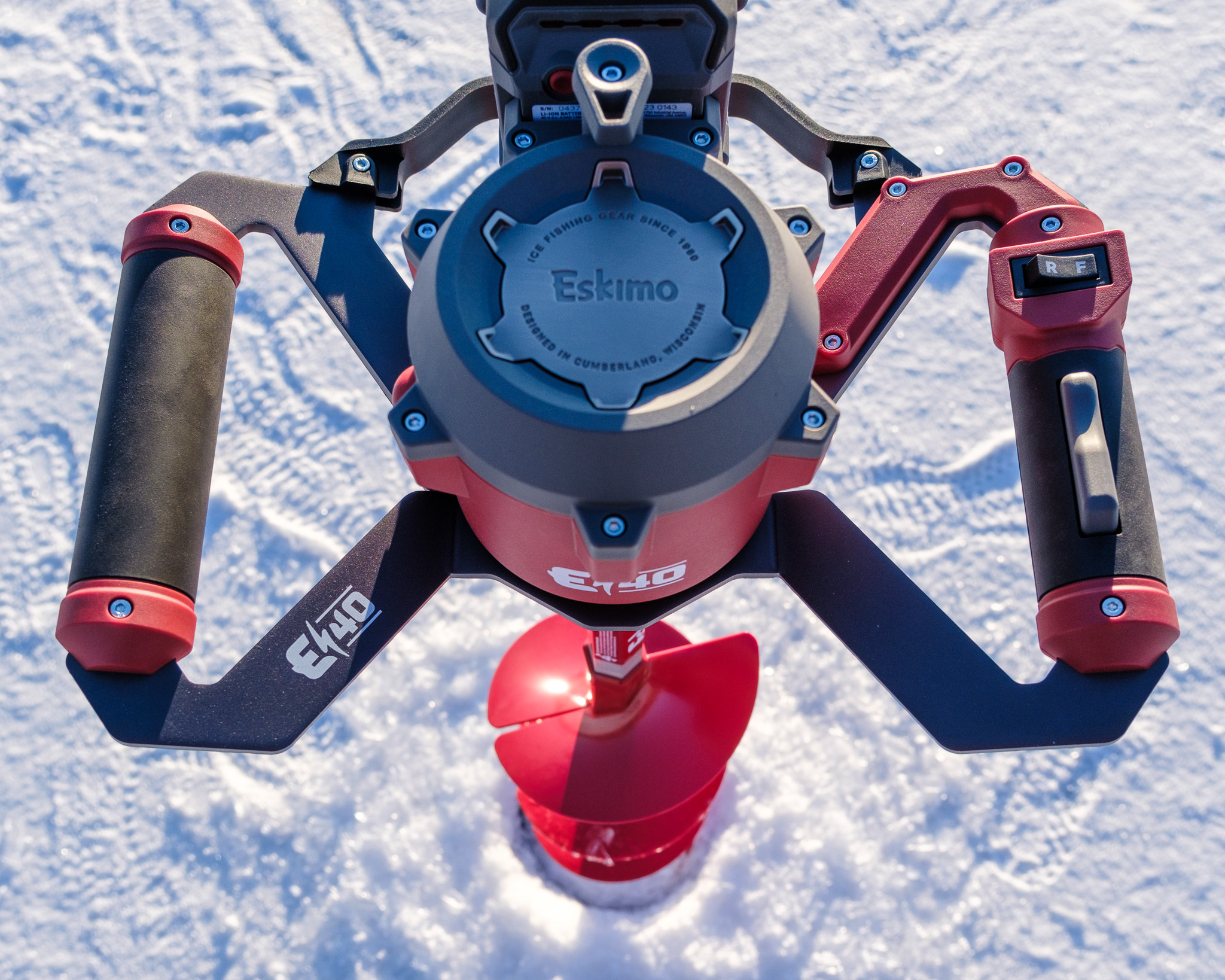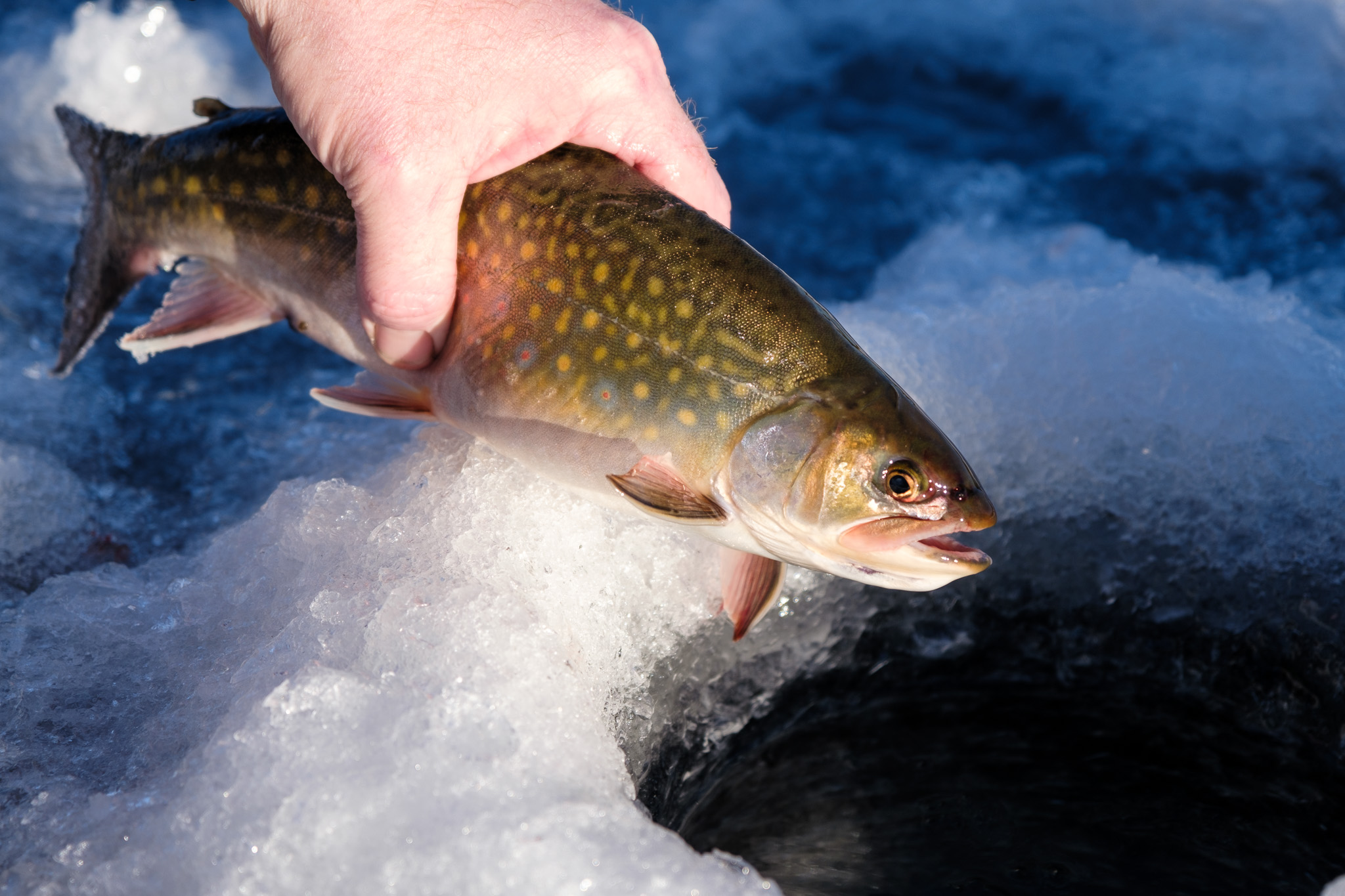Affiliate Links: This post may contain affiliate links. Meaning I may get a small commission, at no cost to you, if you decide to make a purchase through my link. Please read my DISCLOSURE for more information.
Underwater cameras can be a useful tool in an anglers arsenal but I don’t consider them a critical piece of gear; they are certainly nowhere near as indispensable as a flasher. In my opinion, underwater cameras have three main uses: scouting for structure, verifying fish species and studying fish behaviour, and it is in that order that I use my underwater camera.
The VS485c is Marcum’s entry level underwater camera and is most comparable to Aqua Vu’s 715c. Last season, Marcum decided to lower the price from around $650 CAD to $350 CAD (on sale) and it was enough to tempt me into making the purchase. After owning the camera for over a year and using it in a wide variety of conditions, I have a number of thoughts on it. So, if you are in the market for an underwater camera I hope my experience with the VS485c can help inform your decision.
Why did I choose the Marcum over Aqua Vu?
As far as entry level cameras go, the two main brands (Marcum and Aqua-Vu) offer two very similar cameras. Marcum claims to use the best CMOS sensor available in the VS485c and that was the main factor in my decision to purchase the Marcum. In reality, however, after using the VS485c and AV 715c side-by-side in near perfect water conditions, the image from both cameras look almost identical.
The second reason I chose the Marcum was for the included storage case. Aqua Vu’s case is well made but I found that winding the camera cable around the base after each use was enough of an annoyance that I knew I wouldn’t like using it. In contrast, the Marcum conveniently stores the camera and cable inside a rigid shell that is surrounded by a softer ballistic nylon case. The nylon case not only prevents scratches on the screen and camera but it also won’t scratch whatever happens to be riding beside your camera in your boat or ice fishing sled.

Inside the case is an included plastic cable keeper that stores the 50 ft camera cable. While I think that’s a nice way to store the cable, that’s not how I use it. Instead of winding the cable around the cable-keeper after each use, I choose to loop roughly 30 feet of cable up in my hand using the over-under technique for easy storage and even easier deployment. The great thing about wrapping the cable up with the over-under technique is that once the cable is let out again, there are no twists to send the camera spinning – you can get right to searching for fish!

LCD Screen and Image Quality
Specifications
| Marcum VS 485c | Aqua Vu 715c | Aqua Vu Revolution Pro | |
| Monitor Resolution | 800 x 480 | 800 x 480 | 800 x 480 |
| Camera Resolution | Not stated | 644 x 488 | 960 x 576 |
| Screen Brightness | 300 nits | 400 nits | 500 nits |
| Field of View (degrees) | 90° | 100° | 125° |
| Display Screen Size | 7” | 7” | 5” |
| Camera Lux | .01 lux (with lights on) | 0.5 | 0.01 |
The most important consideration of any camera is image quality. As you can see from the above specification table, the VS485c is not a high definition camera and when you consider typical display resolutions of current phones and monitors, the image quality is lacklustre. Below is a short video of my Marcum on what I would consider ideal conditions. The video was shot at Wabamun Lake, Alberta, in 8 feet of clear water on an overcast but mostly sunny day. There was also minimal snow cover and only 8″ of ice so light penetration was great.
First, it’s important to note that the image you see in the video is identical to what is shown on the display. The only difference is with the display brightness. Marcum doesn’t advertise the display brightness but after contacting their customer service, they informed me that it is 300 nits, which is on the lower end of typical displays. The screen does work on bright, sunny days but the display has to be facing away from the sun and I will often try to shield the display with the included sun shield or my hand or coat in order to see it. For the best viewing experience it is best used inside a darkened shelter.
There are a number of things I’d like to point out in the above video. First, note how the colour of the images changes throughout the day. As the cloud cover moves and the lighting changes slightly, the display is constantly adjusting to optimize the image. While I can appreciate the effort, it’s far too sensitive. In some sections of the video you can see the colour changing every few seconds. While I find it distracting, I admit I don’t notice it as often when there is a fish on the screen. It annoys me most when recording and playing back the footage at home, not as much in the moment.
The second thing to note is the overall depth of field of the image. I would consider the above video the optimal conditions to use an underwater camera. In the video, my 2″ lure is set 4 feet from the camera and I can see fish coming in approximately 8 feet away. Roughly 10 to 12 feet from the camera is a tip-up with a 6″ smelt for pike and unfortunately it is not visible at all. At first, I thought the lack of visible range was a pitfall of underwater cameras in general, even in perfect water conditions, but it wasn’t until I used the VS485c head-to-head with a newer Aqua-Vu Micro Revolution 5 Pro that I realized that my Marcum had a shorter depth-of-field.

Bottom: Marcum VS485c
The shorter depth-of-field of the Marcum was surprising to me. Typically, with sensor size being equal, a narrower field of view (VS485c is 90°) would result in a longer focal length – meaning objects should remain in focus longer as they move further from the lens. In the above screen captures, you can see that in the same lake at the same time of day you can make out more features further into the distance (admittedly not as apparent in a photo as it is in video) with the Aqua-Vu as you can with the Marcum. The wider field of view of the Aqua-Vu (125°) vs the Marcum (90°) does make the hook and pike look smaller but despite that difference, the range is better with Aqua-Vu.

Bottom: Marcum VS485c
Again, the above images are taken at the same time of day in the same water conditions. On this day I was fishing for brook trout in a beaver pond with very poor visibility. In a darkened tent, I could look down my hole and just make out the bottom in 3 feet of water. Through the Aqua-Vu camera, it is easy to see fish activity almost 6 feet into the distance whereas with the Marcum, it was difficult to discern anything more than a foot from the camera.
For an entry level underwater camera, the VS485c’s image quality is good enough that in clear water it is quite a useful tool. In poor water conditions, I can still use the camera in the vertical position to learn about bottom composition and help me choose that elusive spot-on-the-spot.
Low-light Performance
During low-light conditions the Marcum VS485c is equipped with LED lights above the camera lens. In most scenarios I find that LED’s offer superior performance to infrared lights but there are many areas where it is unlawful to use artificial lighting underwater while fishing – which is the case here in Alberta:

When not fishing, I used the LED’s to help me find my spot in low-light conditions, typically before sunrise. The lights are also useful for inspecting the bottom composition and help me to look for transition zones under the ice.

Bottom: LED’s on – horizontal glow jig on left side and small insects throughout image
Camera Housing
Marcum’s “Manta-Ray” camera housing has been around for many years and the design hasn’t really changed, even on newer generations. The camera and included extra fin (pictured below) is designed to be used in either a horizontal or vertical position, not a 45° position up or down as is common with other camera brands. I do sometimes use the camera in a 45° down position to watch my lure from above but in order to do so, I keep a small elastic band in the case to wrap around the cord. It works but it’s not perfect.
A word of warning about the fin, when installed on the camera you will probably want to use an 8″ or larger ice hole for the camera. The fin makes the camera quite large and I fear that the camera would get stuck in a smaller hole, especially when the ice is 30 inches thick or more near the end of the season.
My only other complaint with the “Manta-Ray” camera is that the housing isn’t water tight. After just a short time in the water you can pull the camera out, give it a shake and hear water sloshing inside. Concerned it was a defect, I contacted Marcum’s customer support right away. Their response was that water inside the housing is normal. Now, anyone who spends time outdoors in the winter knows that water can freeze very quickly and the last thing I want is water freezing and expanding inside my underwater camera housing. Now, an extra step I take when I pull the camera out of the water is to turn it on its side and shake the water out before it has a chance to freeze. I don’t want the expanding ice to crack open the housing or damage the internals of the camera in any way – its just an added safety measure.

Conclusion
Overall, the Marcum VS485c underwater camera gets a “Good Enough” rating from me. If you can see past some of the flaws of the Manta-Ray housing, it’s a fine entry-level camera that, when on sale, won’t feel like a big hit to the budget. The build quality of the screen is good and I like the tactile buttons on the front as well. The case is excellent and I prefer it to Aqua-Vu’s shuttle.
Underwater cameras are a great way to learn fish behaviour, find structure, and keep kids entertained – and you certainly don’t need an HD screen for those things. That said, we live in an age where high-definition is giving way to even higher definition and trying to interpret images on a screen with such a low pixel count can be frustrating.
In my opinion, demand for low-definition cameras is drying up and budget underwater cameras such as the VS485c and Aqua Vu’s 715c won’t be around in two or three more years. If you can wait that long, HD underwater camera prices should come down to fill their place. If not, the VS485c is still a good value.
Shop the Best Prices
Marcum VS485c
Cabelas.ca | Bass Pro Shops | Cabelas.com | Canadian Tire | Amazon.ca





Thanks for the review!
Thanks for your time to show us the differences,
I think I will look at a different camera. Even if I have to spend a little more.
You’re welcome! I hope you found this helpful. Since posting this article a number of different cameras have hit the market that offer better resolution and better prices. As an example, this new Aqua Vu 722 is an upgrade over the standard AV715c and this Marcum.